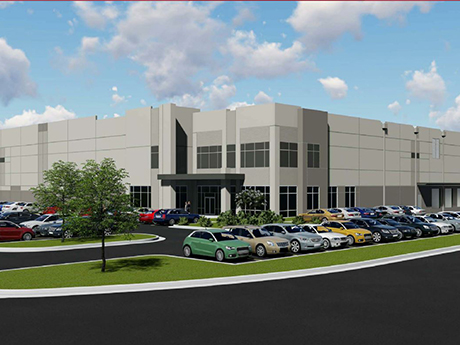In January of 2023, the Memphis industrial market was coming off multiple years of record-breaking growth. However, mid-year we seem to be trending back to a somewhat normal growth pattern. The Memphis industrial market, which was fueled by the pandemic like many other markets, is finally beginning to normalize. Economic factors also influence the market as well.
First and foremost is the uncertainty: uncertainty in interest rates, uncertainty in construction costs and uncertainty in when will we see some signs of stabilization. Many say we need to survive until 2025. Yet, the Memphis industrial market seems to have all the tools to handle this moment, and move forward.

Memphis, located on the borders of Tennessee, Arkansas and Mississippi, is known as “America’s Distribution Center” — boasting unparalleled expertise in distribution and logistics. With a central location, Memphis’ transportation infrastructure comprises the four Rs: runway, rail, river and road.
Memphis International Airport houses the largest cargo airport in the world with the FedEx worldwide hub. Memphis is one of only three cities in the country that has five of the seven Class I railroads: Union Pacific/Southern Pacific, Burlington Northern Santa Fe (BNSF), CSX Corporation, Norfolk Southern and Canadian National Railroad (CN). The Port of Memphis is the largest still-water port on the Mississippi River and the fourth largest inland port in the nation. There are seven federal highways and two interstates that run through Memphis as well, allowing goods to reach 152 U.S. submarkets overnight by truck.
Memphis’ industrial market continues to do well mid-year, with over 9 million square feet of product delivered over the past 12 months and an additional 6 million under construction. Net absorptions totaled approximately 7 million square feet over the past 12 months. Rent growth has also remained strong, just under 9 percent. This is with an average rent of $5.30 per square foot, which is still well below the national average. While the higher-than-normal supply of space may push this vacancy rate above the current 6 percent average, the Memphis market should remain stable long term.
Leasing activity has remained relatively strong with lease rates increasing on average to $5.30 per square foot, with new construction rates between $6 and $7.50 per square foot, depending on building size. While the largest portion of the new speculative product is being built in Desto and Marshall counties, we have seen a few new developments in the Southeast submarket. The Southeast buildings tend to be smaller, attracting tenants capitalizing on the proximity to the FedEx hub. Notable deals include Barrett Distributors move to a 957,000-square-foot industrial warehouse in Marshall County, DHL/Honeypot moving to a 234,360-square-foot industrial warehouse in the Southeast submarket and Frio-Lay moving into a 156,000-square-foot warehouse in the Southeast.
As one would expect, investment sales have slowed. This trend will likely continue in 2023 while investors and lenders struggle with how to deal with higher interest rates and growing economic uncertainty. Some institutional and large investors with cash or previous credit lines will be able to continue to find properties with strong fundamentals to purchase. In the past 12 months there have been approximately 195 transactions totaling more than $500 million.
One of the larger portfolios to sell in that period was Scannell Logistics Park. Sealy & Co., one of the most active buyers in the market, purchased the 466,476-square-foot portfolio in February. The portfolio was fully leased to six tenants with average lease terms of five years remaining. Moving forward with Memphis’s relatively higher cap rate and lower acquisition prices, investors will still look to find opportunities within the market.
The Memphis market construction pipeline for the remainder of 2023 has over 6 million square feet underway. The current pipeline is trending toward small- to medium-size product as the prospective pipeline of 1 million-square-footers is slowing. While most of the product is unleased, there is positive activity. This will most likely raise current vacancy rates for the next 12 months.
With this higher vacancy, most developers do not have any plans for breaking ground on speculative projects until a more stable environment begins to play out. There will be several national developers with available land positions: Hillwood, Core5, Pattillo Industrial Real Estate, Panattoni and Scannell each have available sites ready to develop as build-to-suit options or speculative builds.
The most significant construction project underway is Ford’s Blue Oval City. The automotive giant announced its plans to build one of the largest electric vehicle manufacturing plants in the nation located at Memphis Regional Megasite, in Stanton, Tenn. Ford is partnering with South Korean battery company SK Innovation to build the $5.6 billion, 3,600- acre campus, which will add approximately 6,000 new jobs when it opens in 2025. Construction has already begun, with Ford breaking ground in September 2022. This project will likely lead to a large demand for warehousing and distribution space in the area as suppliers seek to locate near the new plant to service the facility.
The Memphis industrial market will continue to grow at a steady pace, and we believe the market will normalize. While the rest of the year may see less leasing and sales activity, the Memphis market was fueled by the pandemic and is just beginning to stabilize. I see a positive future in the Memphis market as it continues with strong demand for bulk distribution and lower costs when compared to other markets.
— By Hank Martin, SIOR, CCIM, Vice President, NAI Saig. This article was originally published in the July 2023 issue of Southeast Real Estate Business.


